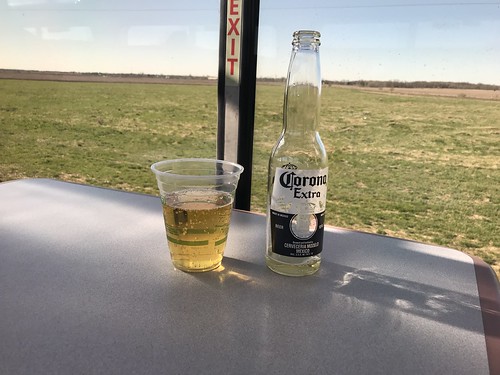
As I outlined in my first post about the trip, in spring 2019 I took a trip across America via train on the California Zephyr route with stops in Chicago, Omaha, Denver, Salt Lake City, and Omaha before returning home to San Francisco. In this blog post I’ll go over the trains themselves before delving into other aspects of traveling this route in future posts.
On the California Zephyr Amtrak has to share all the rails with slow moving freight trains, which often leads to delays. There are only a few sections where they can floor it and make up for lost time — and even those sections aren’t exactly high speed. On straighter sections of the track the trains can hit about 80 MPH at most, but on the winding, curved sections of track it may go as low as about 35 MPH. (Take these measurements with a grain of salt as I came up with them from an app on my phone.)
The train layout is relatively straightforward. In the front are two massive engines. Following the engines is the luggage car, which can be used for checked bags if and only if you’re starting and stopping at stations which provide luggage service. Next are the Superliner cars: the sleeper cars, dining car, the lounge/cafe car, and the coach cars.
The way the passenger cars connect on a Superliner is a bit unique. They’re all double decker train cars and the only passageway between cars is on the second level. Downstairs there’s areas for passengers with disabilities, bathrooms, the cafe on the lounge car, or the staff-only kitchen area on the dining car. If you’re in a roomette the shower is on the lower level.
For most of the trip I rode coach. In many ways coach on Amtrak is nicer than what you’d find on airlines; every seat is either a window or aisle seat, and they all have a generous amount of legroom. There’s an outlet for each seat to charge your phone or laptop.
Superliner Roomette: Day vs. night configuration
I spent two nights sleeping on the train in private “roomettes,” tiny rooms with blackout curtains and fold-out beds in the sleeper cars. These are worth considering if you’re a light sleeper and have trouble getting a full night’s sleep in coach.
Each roomette can fit two able-bodied people with a bunk bed, and even features a tiny closet with hangers. Larger rooms are available for families and groups, but they cost more.
Although fairly comfortable and clean, the coach and sleeper cars look old and aren’t always well maintained. The worst thing I saw was a toilet seat that wasn’t at all attached to the toilet.

Anyone’s free to wander into the lounge and cafe car. Upstairs there’s large windows with skylights and two seating areas, one with booths and one with seats facing the windows.
The cafe is downstairs in the same car — it’s not really a cafe so much as a small convenience store. Depending on the model you’re riding, the cafe will either be a window where you order or a small room where you serve yourself and check out.
At least during my trip the dining car had freely open times for breakfast and lunch, for dinner the staff walked through the train to take reservations. Meal details were announced over the speakers throughout the train. On the dining car the waiters hang out near the center, communicating with the kitchen staff below. To be seated you have to walk up to them and ask for a table.
As for other amenities:
- The trains have wifi… sometimes. I can’t blame Amtrak for this entirely but I blew through my T-Mobile monthly data cap both months during the trip.
- The first sleeper car I rode in ran out of hot water before I had a chance to take a shower. The second one had hot water and it was glorious! There’s nothing quite like falling asleep in one place and waking up in another — but trust me, it’s so much better with a shower and change of clothes.
- The biggest amenity is the windows. Unlike passenger jets there’s a clear view of everything outside as long as the sun’s out. On a route this long there’s plenty to see out there.


